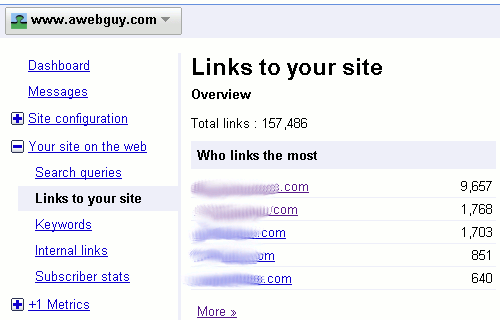
Have you ever noticed that there are a lot of people trying hard to have a big social media audience? I’m sure you’ve seen things like television shows promoting their Twitter and Facebook. You’ve probably seen companies running contests and offering free goods if you will just follow them. You’ve undoubtedly seen the links all over the Internet screaming “Follow Me”. On the more absurd side, you’ve likely had complete strangers with nothing in common, and no real interest in you, follow you or send you a friend request, just to add to their perceived worth.
A couple years ago, I described it as the “Twitter Follower Frenzy“, and it still persists.
Seeking an audience is not all bad, but it is one of the more misunderstood components to social media marketing. It has been widely promoted that if you can gather a big audience, it will provide some unrealistic value to your business.
Once the audience is assembled, many people talk about “engagement”, but then don’t even know what that really means. They will say how important it is to “engage” your audience, so a lot of companies take that as just trying to make friends and be chatty with everybody they can.
Friends are fine, but that is not marketing. That is networking, and social networking can do amazing things for your marketing, and building social media equity is important. However, by using tactics without a strategy, social networking alone will lead most companies to huge disappointments.
Who Are Those People in Your Network?
It baffles me how many people and companies are so desperate to have “Followers” and “Friends” that they will completely give up on understanding who they are, why they came, and what they want. A lot of them are so desperate that they engage in the absurdity of implied reciprocity. You may know it as the “I’ll follow you if you’ll follow me” tactic, and I hope you don’t waste your time with that.
Without knowing who they are, why they came, and what they want, and by just having a bunch of random communications with random people, the value is greatly diminished. After all, just try to “engage” me about knitting needles … it will not help you sell more knitting needles … not even one. Even if I like you, I’m also pretty unlikely to tell all of my friends about how awesome your knitting needles are. It’s just not my thing.
Let’s be clear on this! If you are just trying to reach people, it will not provide the same benefit as reaching the right people. This is the biggest single missing link I find with most social media campaigns, and it is because of an utter lack of strategy. Struggling along this way will cost a lot more time, effort, money, and the worst of all … the huge cost of missed opportunities. So, why don’t people get this?
Without knowing about the audience, it is futile to create the right message they care about and will respond to favorably. It causes many brands to become very boring, and even annoying. A brand without a meaningful brand voice that resonates among their audience is really missing the point.
I realize that things like “knowing the audience” seems mythical to a lot of people. It must seem almost impossible to know who they are as a group, and then to figure out what they want, or what moves them. This is something that you will hear people talk about in theory, but putting it into practice is a much more refined skill.
You’ve Got the Audience, But Now What?
Aside from the job of defining the right market for your offering, successful social media marketing requires being creative enough to determine what they want, and also deliver it. Marketing creativity is not a native asset for most people. Optimal creativity comes when a person is utterly immersed in the creative world as their career. Like any career, people who do something day in and day out get better at it. You can have a degree in dentistry, but if you work full-time as an accountant, you are probably not the best dentist.
I have described the best SEO and social media marketing tools in a previous article titled “The Best SEO and Social Media Tools Are Not As Expected!” As a preview for that article, I offer this video.
Successful Social Media Marketing Requires More
I am not out to discourage or offend anybody who is trying earnestly to learn effective social media marketing. Quite the opposite, I make many sincere efforts to help them. At the same time, I am convinced that there is a huge lack of critical thinking when it comes to online marketing. When I say critical thinking, I mean being willing to question what you’re told, enough to discern the truth from the lies.
There are enough people promoting that “you can be an expert, too” and “easy money” mentality that even things which have no basis in reality or common sense are accepted as truth. When people desperately want to believe something, they make it more believable in their own minds. The one thing I find many people struggle to believe is the truth. That is because the truth is far more complex than what you find in an ebook, a blog article, or a conference.
I am going to share a bit of harsh truth. Some people will respect the honesty, and some will hate it. That never stopped me before, because I write to my audience … the people who care about my industry, people who care about the things I do to help my industry, and people with a propensity to become my clients. That is the voice of my brand, and that is my audience. All of the others certainly matter, but they are not a part of my strategy, and do not affect my business results.
So here we go … this is a small snippet (edited to include relevant links) from a recent 11 page, $200,000, four month marketing proposal that I submitted. No, it was definitely not presented as a $599 pathway to success. We told the truth, and it is up to them to accept it or not. Tear it apart if you like, but the truth is what the truth is, and you cannot change that.
Social media is not identified as easily as Facebook for sharing college party photos, Twitter for telling people what you are having for lunch, LinkedIn for finding a job, and YouTube for showing off funny videos. It is also not so basic as having a large audience, which is a common fallacy.
A lot of people will try to point to facts and figures about social media, but something very few of them will tell you about are the downsides. They overlook how very quickly The Pareto Principle comes into play when you send in a novice to do your bidding. The Pareto Principle is the rule that tells us 80 percent of success comes from 20 percent of the people, and 80 percent of the people will fail miserably, while the other 20 will take 80 percent of the rewards.
When applied to online marketing, there is a very long tail. The percentage of success is much smaller than 20, while the percentage of failure is much larger than 80. In fact, only a very minuscule percentage of social media marketing efforts will become truly successful, but we can explain why.
Most companies fail to realize the critical importance of audience modeling and knowing who they actually need to reach. Most will not make proper use of the invaluable discovery tools to help them reach their ideal audience. Most will not understand the psychographic research enough to know what their audience will respond to favorably. Most will lack the creativity to inspire action. Most do not have the time or patience to invest in knowledge, nor the confidence to invest the money needed to gain that knowledge.
The responsibilities of social media marketing professionals are a lot more than making friends and socializing. It is far more detailed than a person can learn in a month or two, and it is usually not intuitive. Many of the people who do this job the best have been doing it for many years, and put thousands of hours into learning. They are also the ones who are happy to help others learn what really works, and stop believing the myths. That is because when the industry is less confused, eventually each of our clients become less confused.
I know it is a very challenging and sensitive topic for a lot of people. I try to help others to improve their knowledge. I’ve got to say that it also really brings back my earlier question that has been asked around the world many times. That question is “Why Do You Want to Become an SEO and Social Media Expert?”
For those who are just certain they want to be in the business of social media marketing, be sure to subscribe and keep reading. There are very few secrets of effective online marketing. Volumes of good information are available right here on the Internet, and there is a good amount right here in my blog archive. If you take the time to study reliable information, work smart, and exercise due diligence, your marketing will improve regularly.
On the other hand, for those who are certain they need help, call me anytime.
Of course, I can only help a limited few at a time, so whomever you choose to help with your marketing efforts, be sure they understand the importance of what I have expressed here.
Podcast: Play in new window | Download










